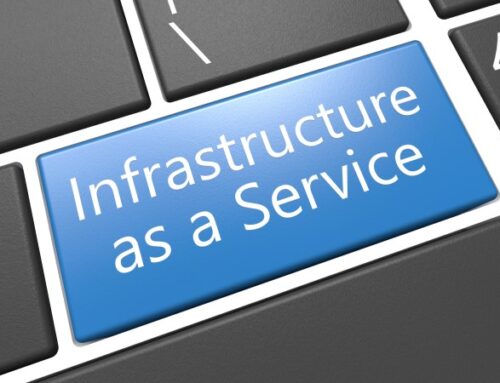The digital change has revolutionized the processing of data. Every day, users exchange large volumes of data in e-mails or clouds. We show under which conditions secure data exchange works.
What is data exchange?
Data exchange is the mutual transfer of information between people and devices. This includes the sending of documents or photos. Data exchange increasingly takes place in electronic form. The term comes from the field of data processing. The exchange of data is a part of data processing and is standardized. This means that certain standards are defined and formats are used. These standards serve to make data exchange efficient and uniform worldwide.
Otherwise, it would result in a company having different text formats that are incompatible with one another. Colleagues would despair because no efficient data exchange is possible in this way. For this reason, standardized exchange formats have developed.
The systematic processing of data promotes a networked world. This applies to the economy, trade or health care. It should be noted that there is a conceptual demarcation to data transfer or data transfer. These terms refer to the technology by which information is transmitted from the sender to the recipient.
How does secure data exchange work?
The question can be changed to: How does the Internet work? On the Internet, users all over the world exchange a lot of data that can hardly be captured. The World Wide Web consists of individual networks. These networks communicate with each other via routers and fiber optic cables. When you enter an Internet address in your browser, your computer is given an IP address to connect to a server. The IP address is like an address on the web. It enables you to find other computers and to ensure the exchange of data.
The Internet protocol “Hypertext Transfer Protocol Secure” (HTTPS) simplifies the exchange of data between computers. It ensures secure data exchange. The principle for exchanging information within a network works in a similar way. Protocols with rules are stored there. They determine the data type, transport, destination and size of data packets. Setting up a digital address enables communication within the network.
A secure data exchange requires encryption in any case. As a cloud provider, TeamDrive offers end-to-end encryption for this important aspect.
Physical and electronic data exchange
The physical exchange of data still exists, because many companies do not yet work in a paperless office. They send offers or delivery bills with the good old fax machine. In everyday life we often still use portable data carriers such as USB sticks to exchange data with friends. Even handing over a business letter to a colleague by hand is a physical exchange of data.
However, electronic data transfer is now also widespread. The abbreviation EDI stands for Electronic Data Interchange. This includes the transmission of electronic information between people or the transfer of data from machine to machine.
Other sub-areas of electronic data transmission are the handling of online processes in e-commerce or the digital communication of IT systems.
A look at the history of data exchange
In 1837, the American Samuel Morse gave the starting signal to transmit data electronically. He invented the telegraph with Morse code. Since then, messages in coded form have been able to overcome great distances.
Shortly thereafter, in 1843, Scot Alexander Bain developed a telegraph with copy function. With it, he sent notes and drawings electronically as well. Do you have any idea what technology developed from this? His machine was the precursor to the fax machine. In 1928, he succeeded in transmitting a fax across the Atlantic by radio for the first time.
The birth of the Internet in 1969 can be seen as a milestone for data exchange. On December 10, more than 50 years ago, users at four universities in the USA exchanged the first data with each other. With the advent of social networks, platforms and messengers such as Facebook, WhatsApp and YouTube, data exchange picked up speed once again.
Online data exchange in the present
At present, end devices for data exchange receive better processors. Fast Internet ensures high transfer rates. Data is exchanged in real time. People and machines network with each other via several interfaces. This has an effect on data exchange, which is improving in step. Cloud computing is becoming increasingly important in private and professional environments. The storage and management of data in clouds is part of everyday work. Content from the cloud can be accessed and exchanged with other users around the clock, regardless of location. There are now many platforms for data exchange. TeamDrive is one of the most reliable cloud services in terms of security. End-to-end encryption makes secure data exchange possible.
Data exchange formats
We use defined formats to create data. They are standard worldwide. Every user has the possibility to view or edit the files on his or her end device. Documents, photos or music data each have their own data format. Many of them are familiar to us through our daily work. The most common compatible file format is the Portable Document Format (PDF). The portable document format was developed in 1993. Many exchange formats work on several operating systems. This feature is relevant for collaborative work in companies.
Overview of the common formats for data exchange
- Text files: txt, doc
- Spreadsheet: csv
- Presentations: ppt
- Image files: jpg, tiff, png
- Web files: html
- Vector files: svg, psd, ai
- CAD Systems: dxf
- Music: mp3
- Videos: mpg, mp4
The SHI data exchange in health care
In times of Corona it is important that hospitals, health insurance companies, employers and service providers communicate seamlessly with each other. Especially for the statutory health insurance (GKV), special rules apply to transfer data. In 1992, the legislator passed a law in the fifth Social Code Book (SGB V). It obliges the health insurance companies to perform billing exclusively electronically. This requirement applies in order to be able to record and process patient data securely and to pay for services.
Unlimited and secure data exchange with TeamDrive
When sending data by e-mail, the software often reaches its limits if the file is too large. As an alternative, a secure cloud solution is available for sending higher data volumes. With our “TeamDrive Outlook AddIn” plug-in, you can exchange email attachments with other users without any restrictions.
Another argument in favor of TeamDrive as a cloud provider is the ability to exchange all data securely. Comprehensive and intelligent encryption protects sent data from unauthorized access. In addition, the exchange is carried out in accordance with strict GDPR guidelines.




